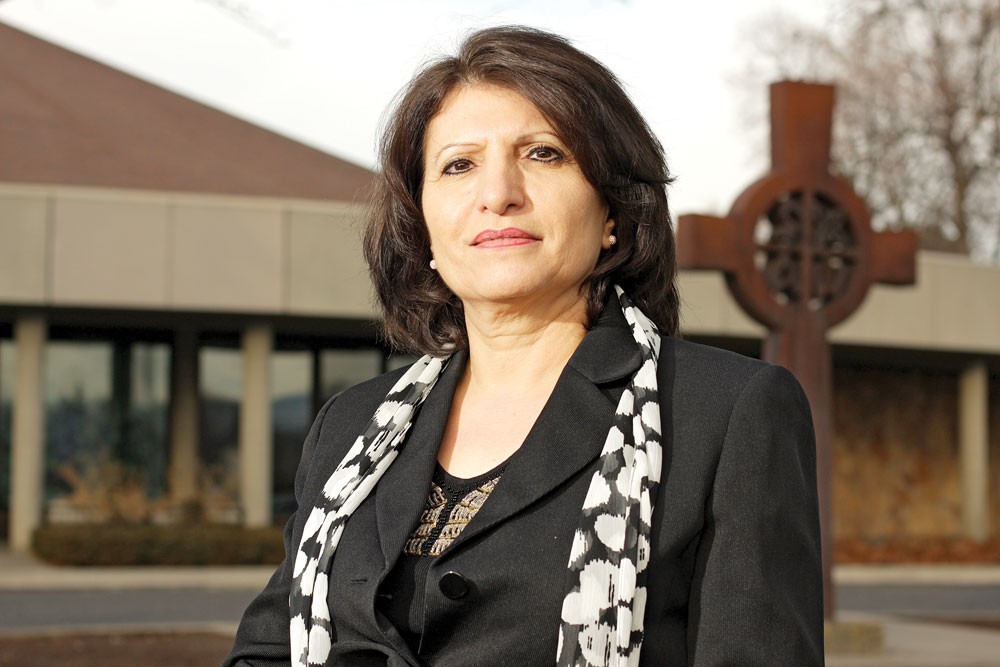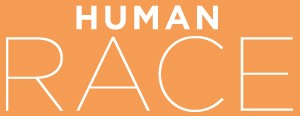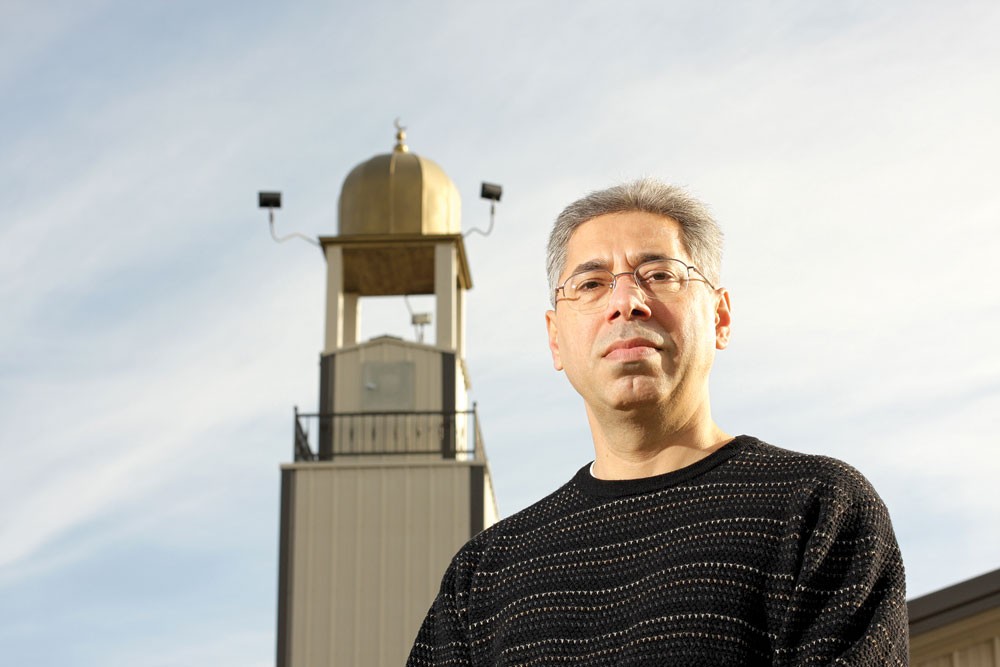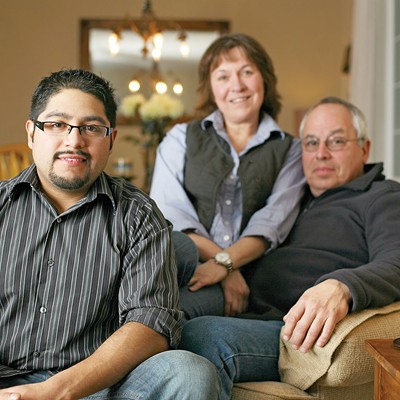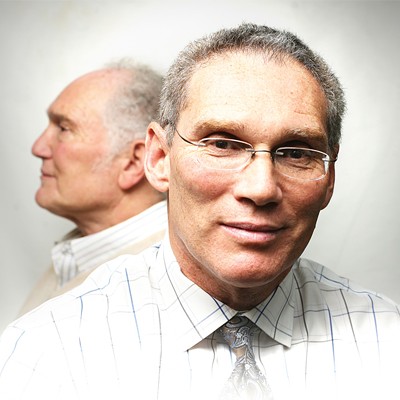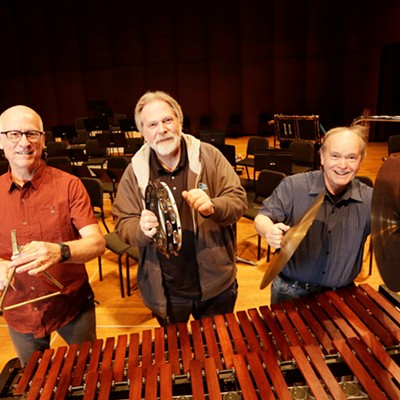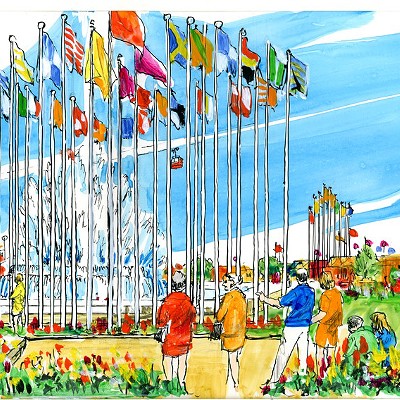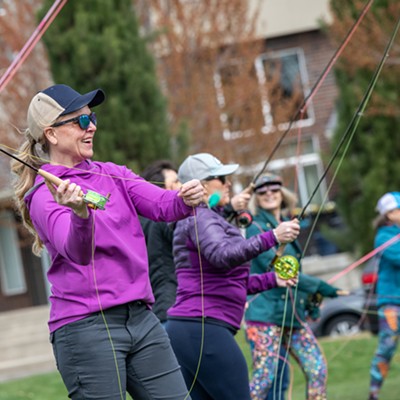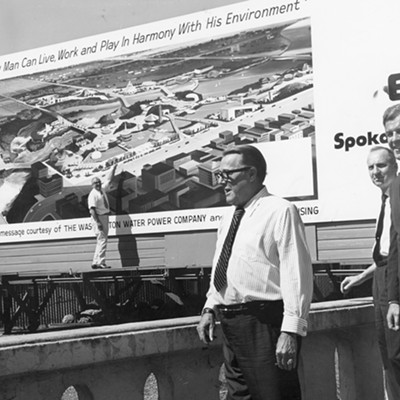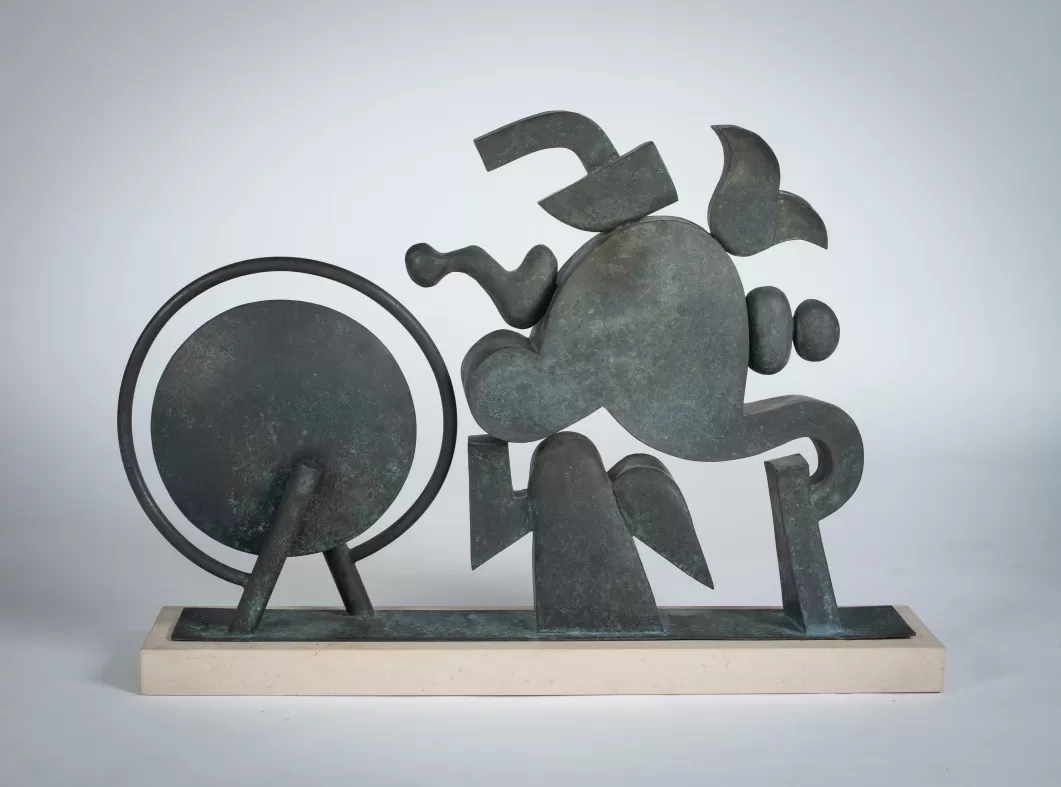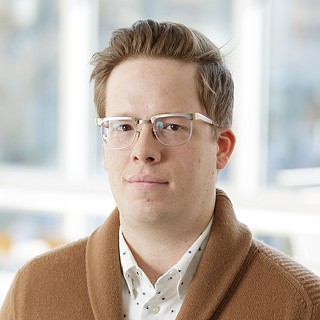They said Kamilia Nemri had explosives. Traces of explosives, anyway. Bomb residue, in her purse.
VIDEO
Kamilia Nemri and Mamdouh el-Aarag on being Arab-Americans in post-9/11 Spokane
This yearlong series will explore how far we have come and how far we have yet to go in achieving a community that is not simply fair and just, but understanding, open and equal.
If you have tips or story ideas, or just want to offer feedback, write [email protected] or call 509-0634 ext. 234.
For some reason, TSA agents in Spokane had pulled her aside and put her purse in a special explosives scanner that had been installed in airports in the wake of 9/11.
“They said it was TNT,” she says, still confused, even though this was eight years ago — in 2004, amid the fear and war-feeling that followed the attacks.
The traces were not enough to charge her with anything or even to detain her. It was just enough to hold her up on her way to see her daughter in Seattle. It was enough to frighten her. “I became so anxious every time I wanted to fly,” she says.
Nemri is a math professor at Spokane Community College and has an office in the science building, near labs where the constituent components of TNT are common. That could explain the detection, but it doesn’t answer a more fundamental question: Why did they pull her out of line in the first place?
“The way I look,” she answers, “the way my voice is.” The fact that, while in line, she received a phone call and her ringtone was a song in Arabic.
That is the bad side.
The good is when her daughters — Yara, Summer and Rabab — and her son, Rahmi, bring friends to Christmas and New Year’s celebrations, and Nemri’s large extended family grows even further, swelled by their kids’ non-Arab friends. Nemri loves seeing the joy these people get from her culture’s music and food and from the communion they have with her family. She thinks it’s good for her kids, too. She once worried that they wanted to assimilate too completely. “It makes them feel, you know, like we [Arabs] have something to offer,” she says.
These sorts of stories are common among Arab people in the area. Dr. Raja Tanas, chair of sociology at Whitworth and a Palestinian, says he loves the community he and his wife have built in north Spokane.
“We live in a radius of perhaps five miles,” Tanas says. “I go to church, I go to work, I do shopping — that’s my world — and that world is wonderful.”
And yet, when Tanas watches cable news, he hears politicians like presidential-hopeful Newt Gingrich calling Palestinians “invented” people, whose claims to land controlled by Israel are null. “These are the voices from above, which should really be truthful,” Tanas says. Instead, he says, they sell out an entire group of people to score political points.
Despite hailing from different countries and being of different faiths, Tanas, Nemri and other Arab-Americans we spoke with told similar stories: Life in America is good but frequently schizophrenic, in a way that often boils down to love thy neighbor, vilify “the Arab.”
But what is an Arab? Even Arabs have subtly different definitions.
Mamdouh el-Aarag, an environmental engineer and former president of the Spokane Islamic Center, offers one definition based on origin and another based on genealogy.
“An Arab is a person that comes from an Arabic country,” he says — one of the 22 nations that have Arabic as a national language — but “a true Arab is a person whose ancestors are from Arabia,” he says.
Like Tanas, el-Aarag is from Palestine and says, “With that definition I might not be a true Arab. I’m not sure where my ancestors came from.”
Tanas says Arab identity exists entirely outside of ethnicity.
“‘Arab’ is a linguistic term,” he says, “meaning a person whose mother tongue is Arabic.”
In this sense, if your first language is Arabic, you’re an Arab. That makes Tanas and his wife both Arab. Under that definition, people from countries as far west as Mauritania and as far south as Somalia are Arabs too, as are people from the Arabian peninsula, and much of the geographic region of the Levant — Syria, Jordan, Lebanon, Palestine and Israel.
The spread of Arabic as a language and a culture often proceeded alongside the spread of Islam. It is now estimated that over 90 percent of all Arabs are Muslim, but no definition of “Arab” exists that references religion.
El-Aarag is a Muslim, but Tanas is Lutheran. The Nemri family is Catholic.
Each
expresses a great connection to their faith, and a great pride that
they come from a place that has historically been tolerant of anyone who
worships God. They all say it is a tolerance they brought with them
when they left, and it was tolerance that led them here.
The lure of the West is strong. Tanas, El-Aarag, and Nemri are all first generation immigrants to the United States, and they all have children who were born here.
They invariably came for opportunity, education and a better life. They have all found it. Nemri got her bachelor’s in Jordan and her master’s at Eastern Washington University. Tanas had a bachelor’s and master’s from the American University of Beirut, Lebanon. He came to America to pursue a doctorate at Michigan State. El-Aarag, after spending his life labeled a Palestinian refugee (“I’ve lived with that title my whole life, which sucks”), made it to the United States and got his degree in civil engineering from Gonzaga.
They came for religious freedom and the freedom of self-determination.
But the pull of cultures isn’t easy. Kamilia Nemri’s oldest daughter, Yara, 30, says that growing up Arab-American — with parents who were loving but so much more strict than her friends’ parents — was really hard. “There were so many rules,” she says. Rules that were often different for boys than for girls.
Her mother found it difficult, too. Yara was born here, and understood the West in an intuitive way her mother didn’t.
“I feel like I was put in a position where I have my [Arab] culture and that is all I know,” Nemri says. “I had to learn about the American culture so I could accept it, adapt to it, and give my children the freedom to make good choices.”
It didn’t happen over night. Yara saw her mom and dad relax their Arab customs as her two sisters and her brother, Rahmi, the youngest, grew. “Rahmi,” she says, with the exasperation of an older sister, “they let Rahmi do whatever.”
Nemri says Yara and the other kids didn’t embrace the Arab culture immediately, but as they matured, she says they began to see the value in living in both worlds. Yara feels like it wasn’t really about maturity, but when her parents relaxed the reins and allowed her to explore both sides of herself — the American as well as the Arab — she began to develop an appreciation of her heritage.
When the family took a trip to Jordan in 2000, Yara met an Arab man named Naeem. Three months later, with her parents’ blessing, and after a somewhat traditional courtship, she and Naeem were married.
Yara says she didn’t picture her life going like that, but she’s glad it did. “I wasn’t really against it,” she says, “it just wasn’t even on my radar.”
It is a cultural tension that helps to clarify both one’s Arabness and one’s Americanness. “I think we grew so much in understanding, you know, of the American culture and living in a balanced way,” Kamilia Nemri says.
This balance is especially important for Mamdouh el-Aarag and his identity as a Muslim. He has a cleft in his chin and light, closecropped hair and, after 30 years in America, only a trace of the accent he came from Palestine with. Sometimes he wonders if he’s become too Westernized. He says he doesn’t get stopped at airports anymore; TSA agents frisk elderly white women instead.
“I think, ‘Hello, you’re supposed to get me, not her,’” he laughs. In matters of faith, el-Aarag says coming to America has made all the difference. “Sometimes I feel that I can become a better Muslim here than in some of the Muslim countries,” he says.
He thinks part of it is that being a minority in a country where your holidays aren’t observed and your traditions aren’t well understood forces you to be more mindful of your faith, but “part of the reason is that we have the freedom,” he says. “My connection with God here is truer.”
It is his
faith, for him, that matters. “If I focus on my race, I’m very limited,”
el-Aarag says. “If I focus on my religion, I’m free.”
Asked what he says to people who wonder how a Muslim could fly a plane into a building, el-Aarag says the only people who ask him that question are journalists.
It is true that all 19 terrorists who attacked on 9/11 — 15 Saudis, one Lebanese, one Egyptian, two from the United Arab Emirates — were Arab. It is true that they all considered themselves Muslims.
It is true that many of the insurgents who streamed into Afghanistan were Arab, and that the majority of al-Qaida leadership is too.
Those are the facts. But Nemri, el-Aarag and Tanas believe that those facts have been funneled through a story that has linked “Arab” and “Muslim” together with the word “terrorist” to the point that they have become almost inextricable.
Tanas believes this story was handed down to the media by American politicians, who have turned a political struggle into a culture war. He believes that what is portrayed in media and government as religious fundamentalism has a root in radical politics. “Why are these people committing terrorist acts?” he asks. “It’s not Islam. It’s not what is written in the Koran. It’s politics — political factors — that prompted those people to do 9/11.”
Tanas says we have refused talk about the political grievances these Arab Muslims have against us, though. “Rather, we vilify Muslims and discredit Islam, as a faith, for political reasons.”
He says we are also careless with our language when we should be precise. “Even those in high office,” Tanas says, “which is really frustrating to me — use the terms ‘Muslim’ and ‘Middle-Easterner’ as synonyms.”
This creates the false perception that there is a single homogeneous culture in the Arab world, and among Arab-Americans. Nemri experiences this in her day-to-day life. “[People assume] that, because I am Arab, I must be a Muslim,” she says.
This isn’t just incorrect, Tanas says, it’s dangerous, because it puts us in conflict with an entire region and faith. “The Middle East area is multi-ethnic, multi-racial, multi-religious, multi-everything,” Tanas says, and we need to treat it as such.
Until we do, he says, we will have conflict abroad and dissonance at home.
Mamdouh el-Aarag believes the definition of “terror” itself has changed.
He believes that, as the War on Terror has progressed — with month after month of news of IEDs and insurgent fighters and Homeland Security threat indexes — the more the term “terrorism” is reserved only for violence committed by Arab Muslims.
It wasn’t always this way.
In 1995, when Timothy McVeigh — a white supremacist — drove a van full of fertilizer and ammonium nitrate into a federal building in Oklahoma City, he was labeled a terrorist. In 2011, after a decade of war in the Middle East, Kevin Harpham — also a white supremacist — planted a bomb along a parade route in Spokane in a way that fits all definitions of terror. He’s not been commonly labeled a terrorist.
El-Aarag offers the case of Harry Burkhart, the German man who screamed “f--- the United States” in a courtroom and was later indicted on 37 counts of arson over New Year’s weekend in Los Angeles.
“Those were terror acts,” el-Aarag says, “but we never heard anyone say he was a Christian German terrorist. Imagine if he was an Arab Muslim.” The terrorist label, el-Aarag says, “would have been automatic.”
El-Aarag’s
frustration, though, isn’t just directed at the media. It’s directed at
terrorists, too. “When they hijacked those planes,” he says, “they
hijacked my religion. They hijacked my culture.”
In the early days of the Iraq War — around the time Kamilia Nemri was being scanned for explosives at the Spokane Airport because of the ringtone on her cellphone — many of the students at Spokane Community College began wearing ribbons to support the American troops fighting to topple Saddam Hussein.
“They all bought the yellow ribbons,” Nemri says, but she never saw these pins on any of the students in her class. It wasn’t that they were unpatriotic, or unconcerned about their brothers and sisters and friends abroad. They were just equally concerned about Nemri.
Nemri says that many of her students couldn’t find Iraq on a map, but she had been open about her Arab heritage. They didn’t want Nemri to mistake their support for American troops as an affront to her.
One day a colleague of hers took her aside. “He said, ‘Did you know that they take those yellow ribbons off when they come to your class?’” she recalls. “They don’t want you to be sensitive. They care about how you feel.”
This is a sensitivity, she says, that we only achieve when we live together, and talk with each other, and understand both the ways we are the same and the ways we are not.
To foster deeper understanding, Nemri began a club at her church, St. Mary’s. Two years ago, she launched a branch at SCC. It is called the “Arab Culture Club.” It meets regularly and its enrollment is growing. This year, her son, Rahmi, is the club’s president.
For el-Aarag, our cultural differences are not just a matter of being born in different parts of the world. They are given by God as a tool to teach. “Hatred and separation is not the reason for our existence,” he says. “God created us different — different cultures, races, languages — so that we can learn from each other and grow together.”
And in that way, el-Aarag says, “Our race will become better together — and we will have more peace.”
“By race,” he clarifies, “I mean the human race.”

